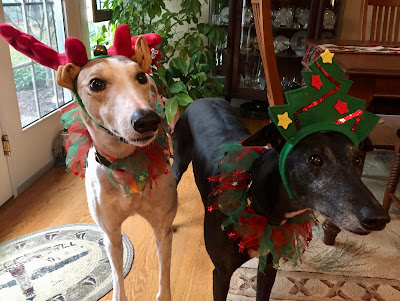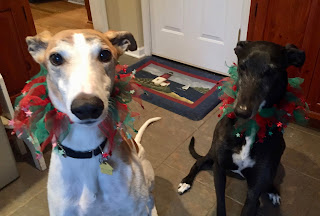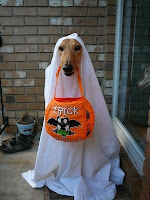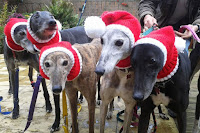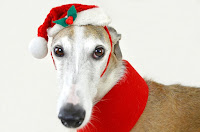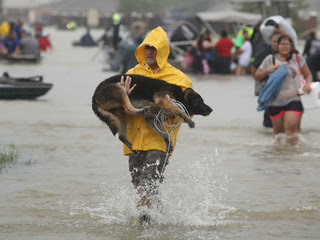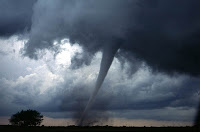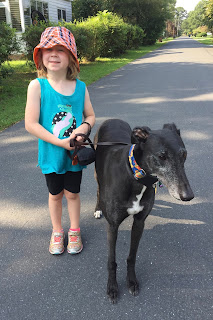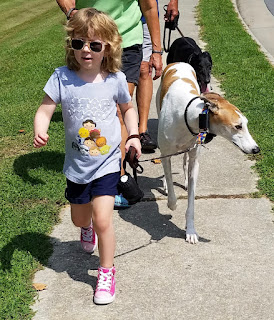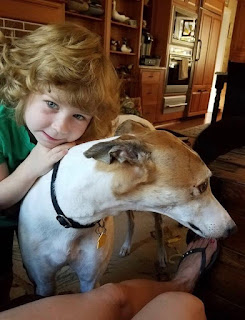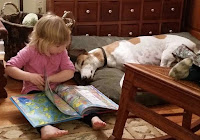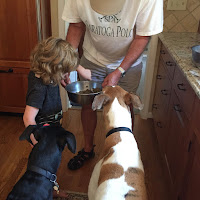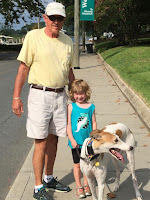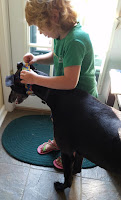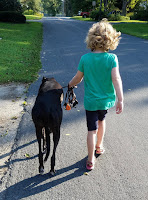 |
| Kazi |
Summer fun on the way,
What will we do today?
Beach or park, walk or play,
Sun and heat, keep at bay.
Summer, the time for sun, fun, and adventure. It may be sun and fun for you and your four-legged friends, but the adventure part may not be what either of you anticipated. The heat and the sun can be both friend and foe. Our pets can't tell us when their tolerance of heat has reached its peak. We have to be on alert to any behaviors that signal their distress. A few years ago, a summer adventure with my dogs turned into a mad dash for help.
 |
| I love Duckie |
My husband and I and Rusty and Kazi,the greys before our present two, went for a short walk on a small beach not far from our home. The beach was on a neck of land that was a distance from the main roads. It was a warm day, but we knew our time there would be limited. As we walked the beach, the dogs moseyed along side us, cooling their feet in the water. Soon Kazi began to lag behind. As I turned to her, I saw what I thought was her sticking her nose in the water. Close to her nose seemed to be a foam. (I later realized she had vomited.) As I looked to coax her along, I noticed her panting and staggering. Since I was sure she hadn't had a cocktail, I urged my husband to get the car. And the mad dash began.
 |
| Rusty and me |
I had never seen heat stroke before, but I was pretty sure this was it. After putting her in the car, we offered her some water, but she wasn’t interested. (It would have been wiser to wet a towel in cool water wrapping it around her as she was transported.) Of course, it had to be Sunday after 5 PM. As my husband drove frantically down the road, I called the emergency number of my vet. Being so far out on that neck, there was no signal. I tried again and again. Finally, a signal! I left an anxious message and within 5 minutes, got a call back telling us to go directly to the vet’s office. This gave us some relief, but we knew this was not good.
 |
Mom dressed me up
again |
Upon our arrival, Kazi was quickly lifted into a large tub, and we began to cool her down with a cool bath of water. Periodically, we would take her rectal temperature. It remained high, so we removed her from the tub. The doctor, then, administered an intravenous fluid. Eventually, this brought her temperature back down to normal as we all felt a surge of relief.
Afterward, the vet thought it prudent to have her watched overnight. We drove Kazi to an emergency clinic where she was cared for until the next morning. After this scare, we became more alert to the heat and how it affects our dogs.
According to webvet.com, heat stroke, the common term for hyperthermia, requires "safe, controlled reduction of body temperature". Cool water or towels "may be placed on head, stomach, underarms and feet". Application of rubbing alcohol to
foot pads is also helpful. Monitoring the rectal temperature until it returns to 103 degrees F is important. Rectal temperature becomes life-threatening when it reaches 109 degrees F.
Dogs regulate their body temperature by panting which is less effective than perspiration. We all know that leaving an animal in a car, even with windows open, in warm weather should never happen. But leaving your dog outside for an extended period during hot weather or letting them run excessively can also cause heat stroke.
Webvet.com suggests:
 |
| Ready for fun |
- During hot weather, check your dog for the following:
- drooling or vomiting
- twitching muscles
- bloody diarrhea
- pale gums
- staggering or stumbling
- a wide eyed look
- difficulty breathing and increased heart rate
- 104 - 109 degree body temperature
If you suspect your dog of having heat stroke:
- Get your dog into the shade immediately and douse with cool
water.
- Apply wet, cool towels to your animal as you transport them to the
vet.
Have a great time this summer. Play with your dogs and enjoy their company, but keep in mind that heat can be an enemy. Be vigilant, and the mad dash you take will only be in fun.
Resources:
Credit: Written and review by John A. Bukowski, DVM. MPH, PHD and
Susan E. Aiello, DVM, ELS
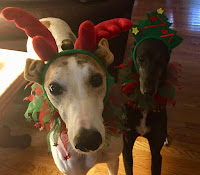
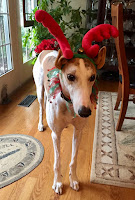 2017 has flown by! When I was a child, I couldn’t wait for my birthday so that I could be another year older (because, of course, everyone knew that adults had all the fun). Little did I know that it was the other way around. Getting older isn’t so bad, though. At each year end, you get to look back on your past year to see the joys and also the mistakes you’ve made.
2017 has flown by! When I was a child, I couldn’t wait for my birthday so that I could be another year older (because, of course, everyone knew that adults had all the fun). Little did I know that it was the other way around. Getting older isn’t so bad, though. At each year end, you get to look back on your past year to see the joys and also the mistakes you’ve made.
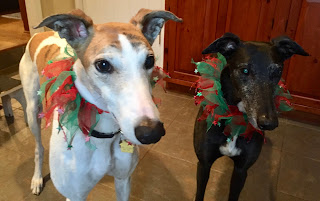 When I talk to people who live alone, and I suggest a dog for company, they sometimes look at the negatives. They’re obligated to walk the dog, and feed it. Then, there’s the dog hair, and the training (although by the behavior of some dogs, that is last on the list if at all). I tend to think of the positives - the unquestioning love they give, the endless doggy antics that keep laughter echoing, their soulful company when feeling alone or abandoned by the world. These are the gifts they share unselfishly with humans. How lucky we are to have a couple of these blessed creatures, not just at Christmas, but all through the year.
When I talk to people who live alone, and I suggest a dog for company, they sometimes look at the negatives. They’re obligated to walk the dog, and feed it. Then, there’s the dog hair, and the training (although by the behavior of some dogs, that is last on the list if at all). I tend to think of the positives - the unquestioning love they give, the endless doggy antics that keep laughter echoing, their soulful company when feeling alone or abandoned by the world. These are the gifts they share unselfishly with humans. How lucky we are to have a couple of these blessed creatures, not just at Christmas, but all through the year. 